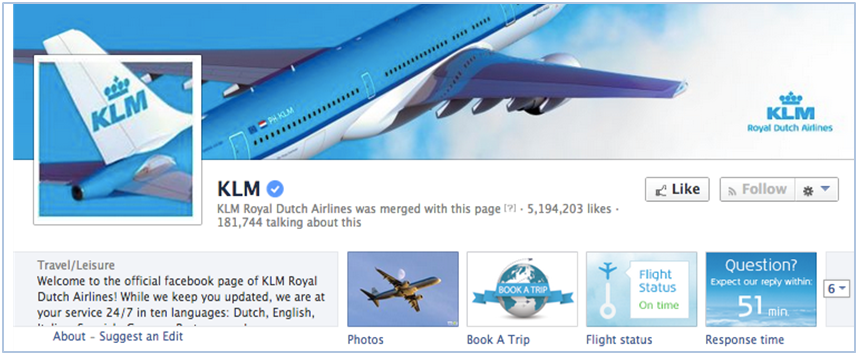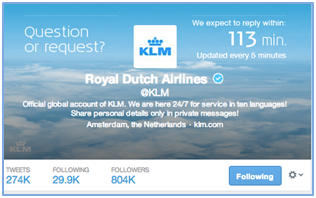Social media & e-commerce, two become one?
Royal Dutch Airlines (KLM) recently illustrated how customers’ payments can now be processed through their social media channels. Passengers are now able to book a ticket, an upgrade or add extra baggage via KLM’s Facebook and Twitter accounts.
In fact the implementation of this payment service seems quite easy: the passenger simply sends a request via private message, and subsequently receives a private message that contains a link to a payment method and the transaction goes through. The system is particularly effective via Facebook. In fact, there is no need to go onto KLM’s website anymore; flights can be found directly via the ‘Book a Trip’ tab, where flights can be bought directly from that page.

KLM demonstrates best practice in their customer approach; they consistently let their customers know an expected response time for their private messages on Facebook and on Twitter (see below: Twitter cover).
KLM has 5 million likes on Facebook and is the airline with the highest number of ‘fans’ worldwide. They have 130 social media agents answering customer’s queries 24/7 in different languages (English, Dutch, French, Italian & more). Purchasing tickets could be made easier for customers via mobile platforms such as Facebook or Twitter, however the response time of +1 hour acts as a deterrent. Customers may still prefer to make their purchase through the KLM’s website or on the phone with a KLM agent. Nonetheless KLM must be applauded for their innovation and clear attempt to stay relevant in our social media-dominated society.
It’s a big challenge to tackle, but that could enhance the company’s reputation as a pioneer in the aviation industry.




